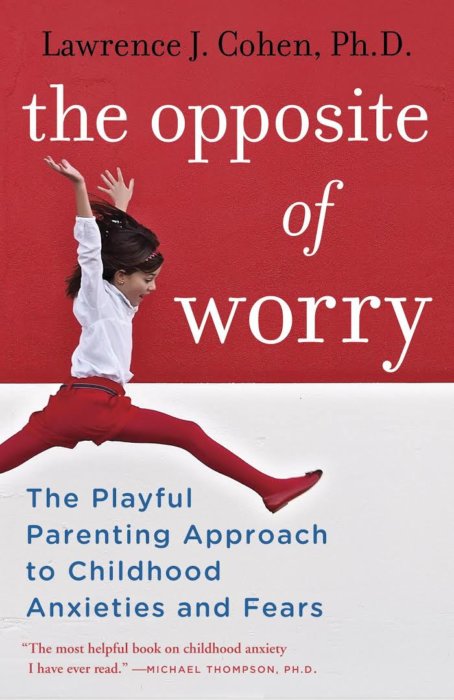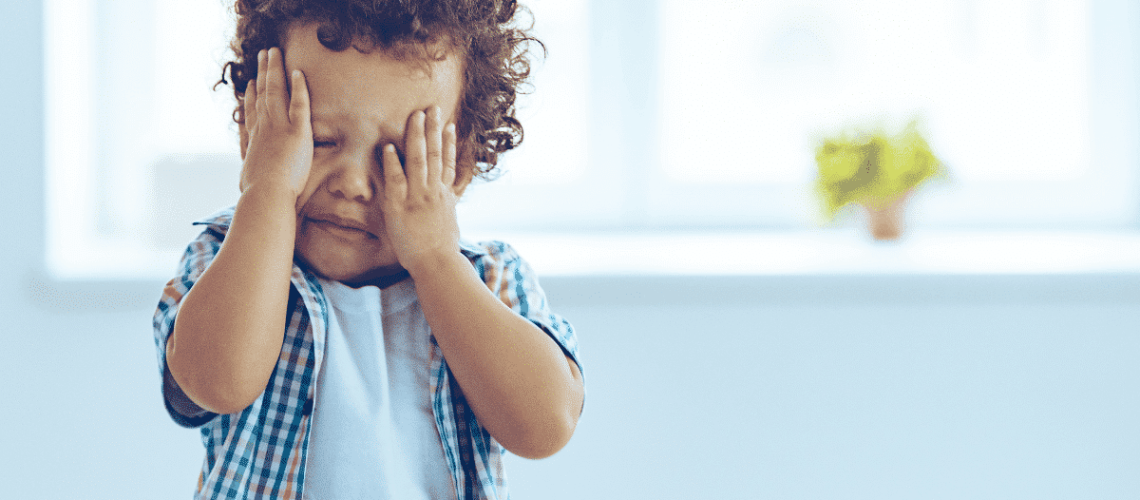In his fantastic book, The Opposite of Worry, Lawrence Cohen introduces us to what anxiety in children looks like, and what we can do to help.
 He covers a great deal of current theory in a clear, accessible, and practical way, linking it to ideas you can use immediately. He also touches on how we can lessen our own anxieties as parents to better support our children.
He covers a great deal of current theory in a clear, accessible, and practical way, linking it to ideas you can use immediately. He also touches on how we can lessen our own anxieties as parents to better support our children.
One of our children is autistic and has anxiety* – this book helped me gain so much clarity around where anxiety was impacting their life, in ways that were not always obvious to us before reading this book.
Is it anxiety?
One really helpful idea to me in this book, was that because fear underlies a lot of our children’s behaviours that challenge us as parents, anxiety is worth considering even if the child doesn't seem anxious. For example, it’s possible that a child might move directly into aggression, without having shown any fear at all – even if in fact there is a fear underlying the aggressive reaction.
If you have explored other avenues, and things aren't moving forward for a child with regard to a particular behaviour, it's worth considering whether anxiety is playing a part.
In terms of accessibility, this book was a great read. It's detailed, yet not so in depth that it loses you. It employs really functional analogies, and real-life stories that engage the reader and aid understanding.
But there are hard parts!
Reading this book really makes you look at your own issues, as well as those of your child, and although Cohen does not at all say “anxious parent = anxious child,” he does point out that anxious children need to see that we are not worried in order for them to come down from high-alert states.
Gulp.
He has a point, I'm sure of that, but it can be hard to take. I pride myself on being calm, but actually I have noticed that during most of my children's upsets, I'm thinking ahead and asking, “What can be done?”
In reality, in almost every case, there is absolutely no urgency. Nothing ‘needs' to be done or achieved. All the child really needs from me is to look to me and see that my whole demeanour is giving the message that: “This is ok.”
There's some work still for me to do there but with the increased understanding this book gave me, being the ‘calm second chicken' (as Cohen calls it) feels much more achievable. This essentially amounts to showing your child, “I'm not worried,” (although still showing empathy), rather than our culture's preferred “You shouldn't be worried.” (Usually conveyed through some sort of ‘Why are you making such a fuss?’ kind of comment.)
This move away from trying to make someone feel that “It's no big deal,” when they are upset definitely resonated strongly with me.
When emotions flood the system
I was also very interested when Cohen talked about ‘flooding.' This is the idea that a child can get so overwhelmed by their fears, that any emotions they express don't actually contribute to a helpful release of the stuck feelings. Instead, the child has moved into survival mode.
Cohen discusses ways to support a child in reaching a ‘sweet spot' of facing and feeling their fear, rather than them tipping over into a completely flooded state where they are overwhelmed by emotion.
This resonated a lot with me, having sometimes found that Staylistening at times appeared to lead to a ‘stuckness’ in the feelings – instead of aiding a useful emotional release. I hadn't clicked that, in those times, the child had passed beyond that sweet spot and become overwhelmed, and actually needed help going back. In fact, Hand in Hand advise exactly this too, but it really fell into place with me at the point of reading!
Retrospectively, this was my own lack of experience in using Staylistening, but I think is worth noting for those on a similar path. Some slight, subtle adaptations of Staylistening could be used for children who have tipped over into flooding. For instance, normally, we wouldn't talk too much in Staylistening because it brings children back into their ‘thinking' brain and stops the emotional release, but for children who are flooded by their emotion, you might need to physically back off and increase the flow of verbal reassurance. (Note, this is just one example of how we might bring a child ‘back’, and won’t be right for all children.)
It's also really worth noting as you go through the process with your child, what exactly you do and how the child is afterwards. Think about what works well, and what could use tweaking.
And just try something! Getting myself to a place where I wasn’t afraid to try something and have it fall a little flat has been key for us in moving forwards in our family – not everything will work every time, and that’s ok!
‘Aha' moments for handling anxiety
I read this book at what seemed just the right time for me, and I’ve found that it complements the Hand in Hand approach beautifully. The more I learn, the more I see that Hand in Hand promotes the same ideas about what is a useful emotional release, and how to pitch your Staylistening to get there, but at the point of reading I hadn't quite made that leap!
As I read, I felt a few more pieces clicking into place.
While there is more delving to be done for our family I'm sure, the concepts fit well with what I already know, and sit well with my current thinking on Staylistening with our autistic child.
The Opposite of Worry is a great book, and I would highly recommend it to any parent.
Should I read the opposite of worry?
- Read this book if:
– You have, or work with, a child who appears anxious
– Things aren't moving forward for a child around a particular issue (e.g. aggression) – even if the child doesn't seem anxious
– You want to better understand where anxiety comes from and what it can look like
– You want creative ideas of how to tackle anxiety in everyday life and through games and playfulness
– You have, or think you have, anxiety yourself!
For more calm, connected parenting inspiration read 15 Connection-Building Books for Parents

